
City initiates large scale graffiti crackdown on Queen St.
The war on graffiti in Toronto appears to have officially begun, and the battlefield is Queen Street West. After being tipped off by a business owner in the area that a crackdown was underway, we've since confirmed with the City that between February 22 and March 3, 152 removal notices have been issued to properties on the street. Although we lack a detailed list of those served, some of the graffiti in question is reported to be murals that were previously commissioned by businesses.
When asked about the crackdown, Rob Sysak, a spokesmen for the West Queen West BIA, expressed surprise at the timing. "We were warned that graffiti would be targeted, but there was to be a detailed staff report before any action was taken. As it stands, most of these business have three days to comply."
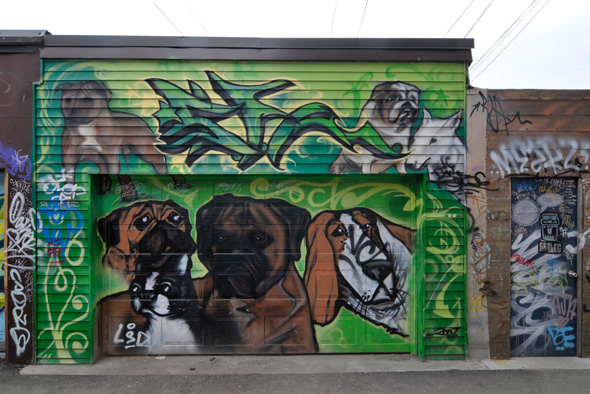
Bruce Hawkins of Municipal Licensing Standards (MLS) tells me that this timing isn't unusual. "Most notices issued indicate six days for compliance (from the date of issuance) in accordance with the minimum time period specified in the by-law. The six day period is comprised of three days for service of the notice (registered mail) and three days for compliance."
There has, however, clearly been a failure of communication or a change of plans when it comes to how the City is handling graffiti on Queen West and West Queen West. Sysak claims that at an MLS meeting shortly after the new mayor was elected, the strategy the City planned to adopt for graffiti in the area was to address only specific complaints. That's no longer the case. When asked about the recent rash of removal notices, Hawkins reveals that the "activity is pro-active in nature."
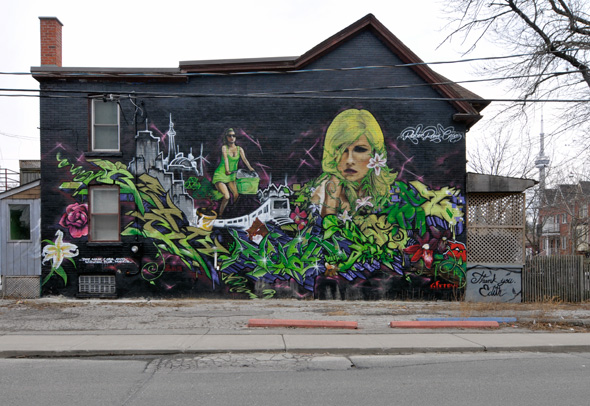
Business owners don't have a problem with the idea of helping to keep the city clean, Sysak says, "but the big problem is that even when graffiti is removed, it just goes back up again." The sentiment in the neighbourhood is thus that this crackdown actually punishes the victim. "This can be quite an expense for small businesses, and some of them don't realize they can appeal," he bemoans.
And then there's the City's problematic distinction between graffiti and art murals. When I spoke with Curtis Sealock of MLS about removal notices that were sent to two Junction homeowners in January, he told me that to avoid by-law violation, murals must be designated, which he took to mean "something that's been selected by the City or a BIA." And yet there was no consultation with the West Queen West BIA prior to these notices being issued. As such, Sysak plans on writing a letter to the City asking that "enforcement be halted so that we can do a review of the properties that have been targeted."
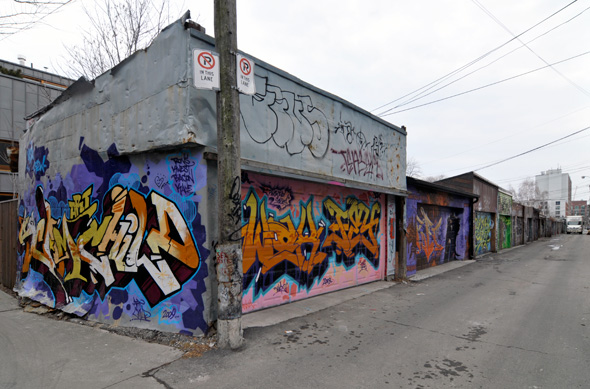
He also tells me that the BIA will support those businesses who plan on appealing the removal orders. How exactly the City deals with such appeals will be interesting to see. Assuming a property owner wanted to save a mural he or she had commissioned or allowed to be put up, according to Sealock's interpretation, the backing of the BIA should be enough to quash the order. On the other hand, given the sudden nature of these "proactive" measures, it's not entirely clear how this ambiguous distinction will be handled.
For its part, MLS intends "to work closely with all property owners to gain their co-operation and compliance. And appropriate extensions will be considered on their own merit on a case by case basis," says Hawkins.
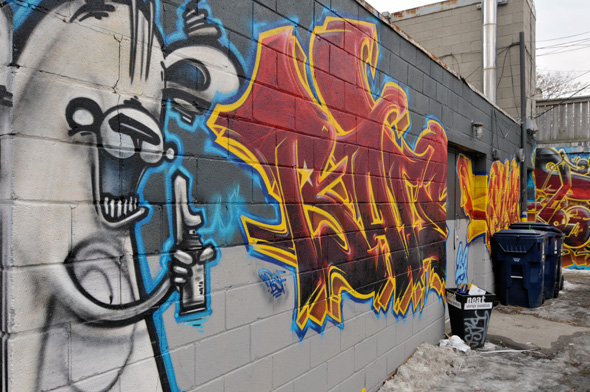
Still, not everyone's convinced. Earlier today I spoke with a local artist who co-owns Joe Huffers Paint Shop, a supply store for Toronto graffiti writers. He tells me that the graffiti community gets frustrated with crackdowns like this one because they don't believe that a distinction really is made between tags and murals. "It's good to take down the junk and the tags, but the problem is that it all gets put under one blanket. And now we're going to lose some murals that were put up with permission. The City shouldn't be the one to dictate what is and isn't art."
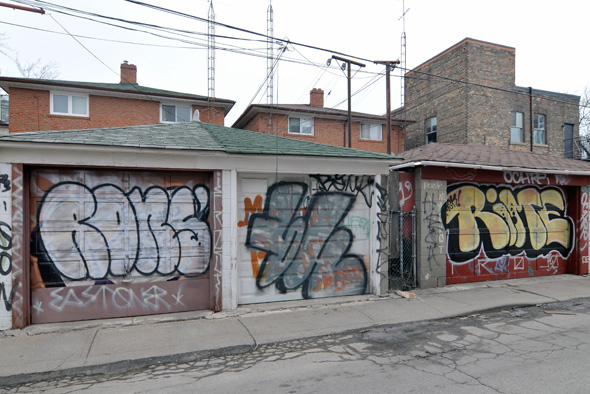
Latest Videos
Latest Videos
Join the conversation Load comments







